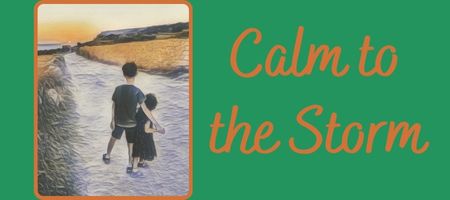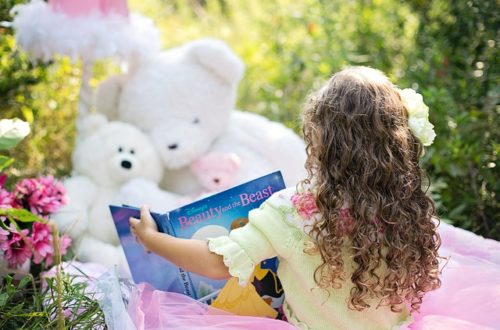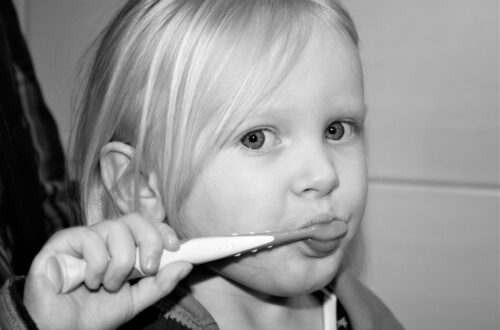
Do Children Understand the Difference Between Lies and Imagination
Today we will be examining if children can understand the difference between lies and their imagination. If they do, from what age?
We all want our little ones to be truthful. It is important, however, to ensure that our expectations match their development. So let’s look at what cognitive developments may be in play?
The difference between reality and imagination
Before we ask if children understand the difference between lies and imagination, we need to ask if they understand the difference between reality and imagination. This is important, because if a child does not know that what they are saying is not factual, it follows that they are not intentionally lying.
Evidence shows that a child’s perception of reality versus fantasy develops significantly throughout the preschool years and is solidified during their school years.
At the age of two, the line between reality and fantasy is blurry. Toddlers love to pretend play. A stick can be a sword, or a stone a precious gem. Woe to the parent who tries to correct them.
From age three, a child’s understanding of reality is developing, so they will be able to understand more often, what is true and what is pretend. This distinction is not set, however, and they may still get confused at times. Their ability to differentiate fact from fiction will grow as they do.
By the age seven a child is said to enter the logical stage. Of course, not everything a seven-year-old does is logical, which is part of the fun. They can however begin to use logic to work things out, so will develop a clearer understanding of reality.
So to sum up, although an older child can tell the difference between reality and fiction, a younger child may struggle. This can be seen when a young child has a disproportionate response to a television show or book. The stories have become real to them.
How children understand reality
Young children are learning all the time. Facts that we take for granted are revelations to them. They aren’t born knowing things, like that a candle flame is hot. We know it, but left unattended a toddler might come to know this fact the hard way.
As they acquire new information they then try and make sense of it in light of what they already know. So if your little one touches a flame and gets hurt, they may connect that with the fact that they have already learnt, that hurting people is mean. The logical conclusion may then be that the candle is mean.
As well as sometimes making false connections, young children have not yet developed all the skills needed to understand other peoples perspectives and intentions. An example of this is if a friend breaks a favourite toy of theirs. A young child will not ask if it was intentional or accidental. The understanding that intent and desire guide other peoples actions does increase significantly throughout the preschool years, but the ability to fully understand the complexities of other perspectives is something that is still developing into adulthood.
Emotions also play a role in how children understand the world. Children have not yet developed the understanding to be able to adopt a balanced and nuanced view of situations or events. This means that a child’s emotions, combined with their simplistic perception can make them see things in black and white.
Black and White
You may see evidence of this black and white thinking, if your little one had a mishap on an otherwise lovely day out. Perhaps you’ve taken them to the park, they have played with their friends and got treated to an ice cream. Then, in the last five minutes they tripped over and hurt their knee. Up until that moment, they likely thought it was a lovely day. However, the big emotions that hit them when they fell over completely changed their perception of the entire outing. Suddenly, their focus has shifted. The afternoon has been a disaster, and for evidence, they will look back and notice every negative thing that had not bothered them before.
Of course, sometimes it works the other way, and the fun of a situation can override the bad, so that a child will see an afternoon as all positive even if there are moments they didn’t enjoy. This is not absolute, and there are times when young children do see the good and the bad together, but on the whole nuance is something children take a while to acquire.
So, in summary, children’s understanding of reality is something that develops along with them. Imagination can actually help a child to understand the reality around them and fill in the gaps.
Do children understand the difference between lies and imagination
Children as young as three will have a grasp of the concept of lying. It is not uncommon for little ones to lie to try to avoid being in trouble or to get something that they want.
Are there times, however, when children tell lies based on their imagination because they don’t understand the difference? Absolutely. As we have discussed, children’s views of reality can be muddy, and confused with fantasy or daydreaming..
Even when children understand reality, they may find their imaginary world more fun. This does not mean that they are maliciously telling lies. When you hear their tales of the secret bunny who comes and messes up their room while they sleep, or the backflip they did when you weren’t looking, the stories may seem silly. Silliness is part of the fun of children, and it will pass too soon. Do they know that they left the jigsaw pieces all over the floor, not the secret bunny? On some level, of course they do, but the world where a secret bunny is the mischief maker is more exciting.
A blurry line
The line between lies and imagination is not a clear one with little children. In the end it is about intent. Are they trying to hide something for their personal benefit or are they just having fun exploring the world of fantasy? Do they truly misunderstand?
As our little ones grow, they will have a clearer concept of the truth. By the time they are around six years old, they will have a much clearer idea of what reality is. Until then, you can enjoy your little one’s fantasies. Join their world and share the fun. Maybe you could get them to make a sign to remind the secret bunny to be kind and put away toys, because your little one will have to put away any that bunny leaves out. Ask them to draw a picture of the backflip and how their feet “literally touched the ceiling”.
How to help your child tell the truth
Although, there is no harm in your little ones imaginations superseding reality at times, there will also be times where the truth is important.
Help them fact find
As we discussed earlier, sometimes children tell lies because they don’t fully understand reality. Helping the to weigh up what they actually know can be a great learning tool for them.
Spend time discussing the difference between what they know for certain, and what they think they know. Then explore all the possibilities that may be true. You can help them examine different perspectives.
Something that little children are likely to assume is intent. You might hear phrases like, “He knocked over my milk on purpose to be mean!”
You know that the milk spill was a mistake. It does not mean that your child is lying, however. They may truly believe they are the victim of a spill and run with intent. So it is worth helping them examine facts versus assumptions.
Their brothers arm hit the glass of milk and it fell off the table. That much is fact.
That he wanted to spill the milk, is a guess. Can they remember times when they knocked things over by mistake? Did they notice that their brother always moves his arms when he talks? Did they notice that he was looking the other way when the accident happened? How would they feel if they had made a mistake and someone had decided they had meant to do it?
All these questions can help them explore the situation pragmatically, and develop their perception of reality.
Make it easy to be honest
When our children are little the lies that they tell will be usually harmless.
“I didn’t spill my juice. My brother knocked it over.”
“Mummy likes us to have pudding first.”
“Pudding first was Grandmas idea.”
When they are older however, and are facing bigger issues, telling the truth can be much more important. Therefore, if you set the standard early, that honesty will be met with kindness you can create a culture where your children can come to you when they have messed up.
We have a rule in our home. If our children mess up, and tell us honestly what they have done, we will get alongside them and help them fix it. This doesn’t mean that they avoid the consequences of their actions, but we help them navigate the consequences and come out stronger. It means choosing discipline over punishment.
It does not mean that children can get a free pass. If they have made wrong choices they have to make things right again. However, they should never be scared of us.
An example of this could be, your youngest child was saving a cupcake and it magically disappeared. You know it wasn’t magic, especially because your oldest child has blue icing on their cheek.
If they are honest, and you shout at them, guilt them, give them a big punishment, and then spend the week telling your friends over tea at playdates what a little pain in the bum they are there is a strong chance they will not choose to tell the truth again.
Instead, talk to them about how their actions affected their sister and ask them to bake more cakes or use their money to replace the one they stole It would be entirely appropriate to ban screen time or treats until they have fixed this so that they understand it is a priority. Once they have apologised, fixed it, and you know they understand to make better choices in the future, move on.
Role play to increase empathy
Empathy is a skill that is developed throughout childhood, and is therefore usually underdeveloped in little children. Sometimes they may tell a lie because it benefits them, and will not consider how the lie affects other people.
When I was a little girl, about seven years old, I cut my hand playing with scissors. I wasn’t allowed to play with scissors and knew that I would be in trouble, but I couldn’t hide the blood. So, I told my mum that my brother had been playing with scissors and had hurt me. Of course, my brother got a rollicking, and I got sympathy.
You will be glad to know that my conscience got the best of me and I confessed. I confessed to both my brother and mum over a bottle of wine when I was about 27, but still, I did the right thing eventually.
Looking back, it must have been horrid for my brother. He was minding his own business, not even thinking about scissors when he got all the wrath that my actions had incurred.
If you catch your little one telling lies at other people’s expense, get them to take a few minutes sitting and pretending to be the person who was hurt by the lie. Please don’t just leave them there feeling bad though. Sit with them after and talk about the right choices that they can make to fix anything that needs fixing.
Give them the space and time to make the right choice
When children feel threatened or scared, they often make easier choices rather than right choices. They act on impulse, and for survival. This is because, when a child is threatened or scared, the downstairs brain will be in control.
If you are unfamiliar with the concept of the upstairs and downstairs brain, here is an article which describes it in more detail. The basis is that the downstairs brain is the first to develop, and is instinctive, initiating the fight or flight response when threatened. If a child goes into fight or flight, the upstairs brain is no longer in control. This is a problem because the upstairs brain controls skills like empathy, reasoning, and logic, which your child needs to make good choices.
If you catch your child in a lie, and stand over them demanding they tell you the truth right then and there, or else, then the downstairs brain will kick in. Sometimes it may be worth letting your child know that you are aware of the truth, and ask them to come and talk to you by the end of the day. Make sure that there are times to talk with no one else around. As an adult, if we make a mistake or a wrong choice, we have the privacy and space to work it out privately, or one-on-one with anyone else involved. Children deserve this too.
A final note
Although young children do not always understand the difference between lies and imagination, they will do soon enough, so enjoy the days when their world may be a little more whimsical.
Older children do know the difference, but it is still not uncommon for them to lie. When they do, stay calm and kind. Lying is a stage most children go through. If we handle it right, hopefully they will feel safe telling us the truth when they are older and make mistakes.
I wish you all the peace,
Hannah Louise








